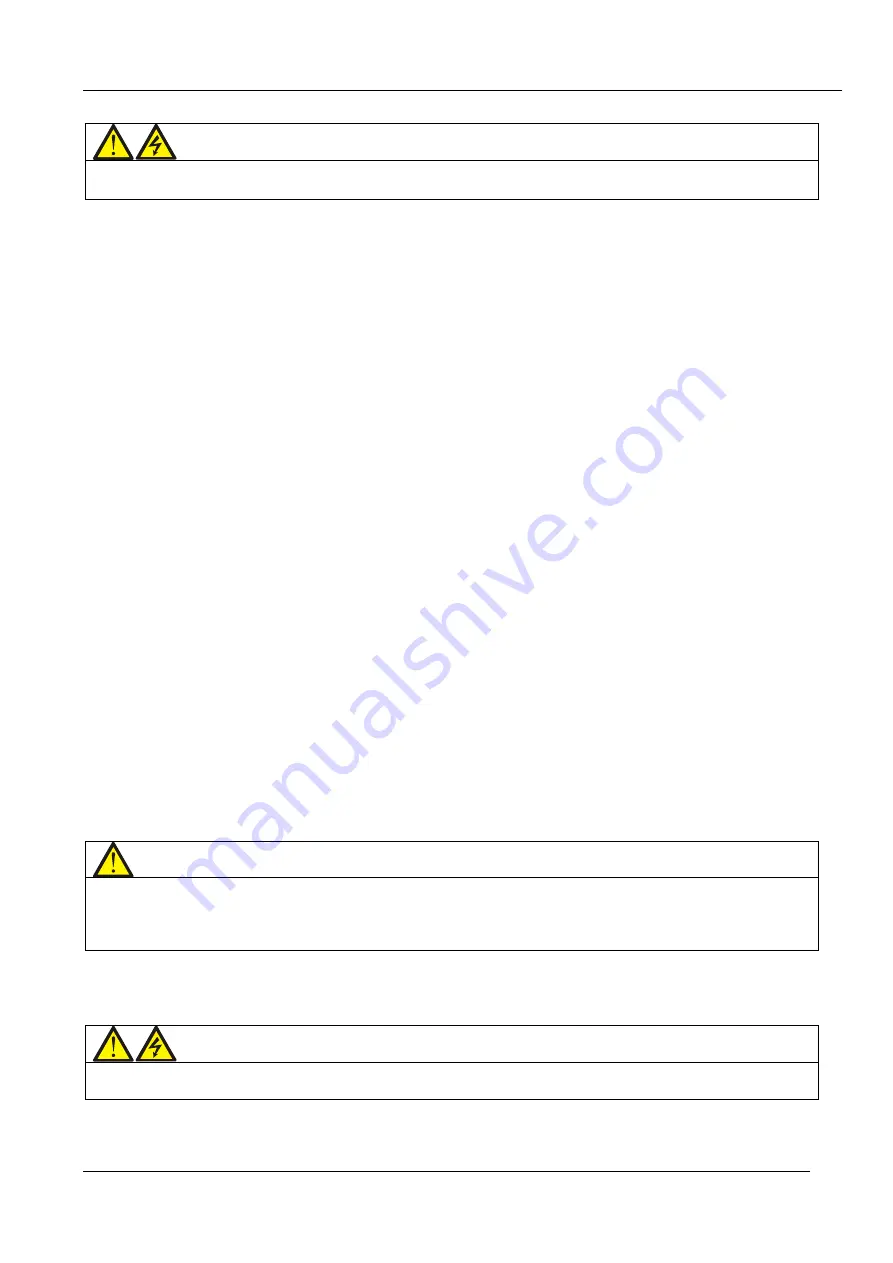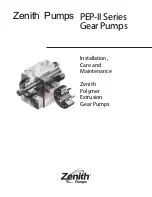
59
User Manual 10H52258UM60 - Rev. 3 - 01/2019
Introducing UPS Operations
APM 400/600
internal power supplies are off and the LCD does not display any information.
Warning
•
Post a label at the AC input distribution point (normally located at a distance from the UPS) to notify
other personnel that the UPS maintenance is in process.
•
Wait for 10 minutes for the internal DC bus capacitor to discharge so that the UPS is completely de-energized.
•
Hazardous voltages may still be present on the battery terminals even after the UPS is completely
de-energized. Incorrect use or handling may result in severe injury.
6.6.2
Shutting the UPS down while maintaining power to the load
Refer to the procedure explained in section 6.4.4 Transfer from Normal Mode to Maintenance Mode for more
detailed information about this procedure.
6.7
EPO procedures
The following are the step-by-step instructions that must be performed in order to activate the EPO function:
•
The EPO is designed to switch off the UPS in emergency conditions (fire, flood, or any other calamity). Press
the EPO button so that the system switches off the rectifier, inverter, and interrupts the power supply to the load
immediately (including the inverter and bypass).
•
At this point, the battery stops charging or discharging. After the EPO has been activated, if the mains input is
still operational, the UPS control circuit will remain active; however, the output will be switched off.
•
To de-energize the UPS completely, open the external input power switch of the UPS.
6.8
UPS Reset Procedures
Assume that the UPS is shut down after implementing the Shutdown process using the EPO facility, or if it has
been shut down due to a critical fault, in order to ensure correct operation the following reset procedures should
be implemented in order to restore normal workflow:
•
If the system has been shut down due to a critical fault, the fault will generate an audible/visual alarm and an
alarm message will be displayed on the LCD screen. Clear the fault by following the instructions in the specific
alarm message. On occasions, the UPS may be shut down by the EPO function in the event of a natural disaster
or critical situation.
•
In either case it is necessary to carry out the UPS reset procedures. If there is no remote EPO signal or if the
fault has been rectified, press the Fault Clear button for a period of 4-5 seconds. The system will then exit the
EPO state while the alarm indicator flashes red.
•
Once the rectifier starts, the rectifier indicator light assume the steady, green state.
•
Press and hold the INVERTER ON key for 3-5 seconds. The Inverter starts up and the indicator flashes the
green.
•
Once the Inverter is running normally, the load is transferred from the bypass to the inverter, and the inverter
indicator assumes the steady, green state.
Note
The rectifier will restart and the bypass will begin to power the load. The rectifier indicator flashes while the
rectifier is starting up. When the rectifier enters the normal mode (after approximately 30 seconds), the alarm
indicator flashes or is extinguished (when connected to a battery). The rectifier will start automatically once the
over-temperature signal is eliminated.
•
When the user presses the EPO button, if the mains input is switched off, the UPS will shut down completely.
When the mains input returns, the UPS will start up in Bypass mode and there will be power present at the UPS
output terminals.
Warning
If the maintenance bypass switch Q3 is closed and the UPS input power supply is present it will indicate that the
UPS output power is active.
6.9
Automatic Restart
In the event of a mains failure, the UPS draws power from the battery system in order to supply the load, until the
batteries are discharged. When the UPS reaches its EOD (End of Discharge) voltage, it will shut down.
















































